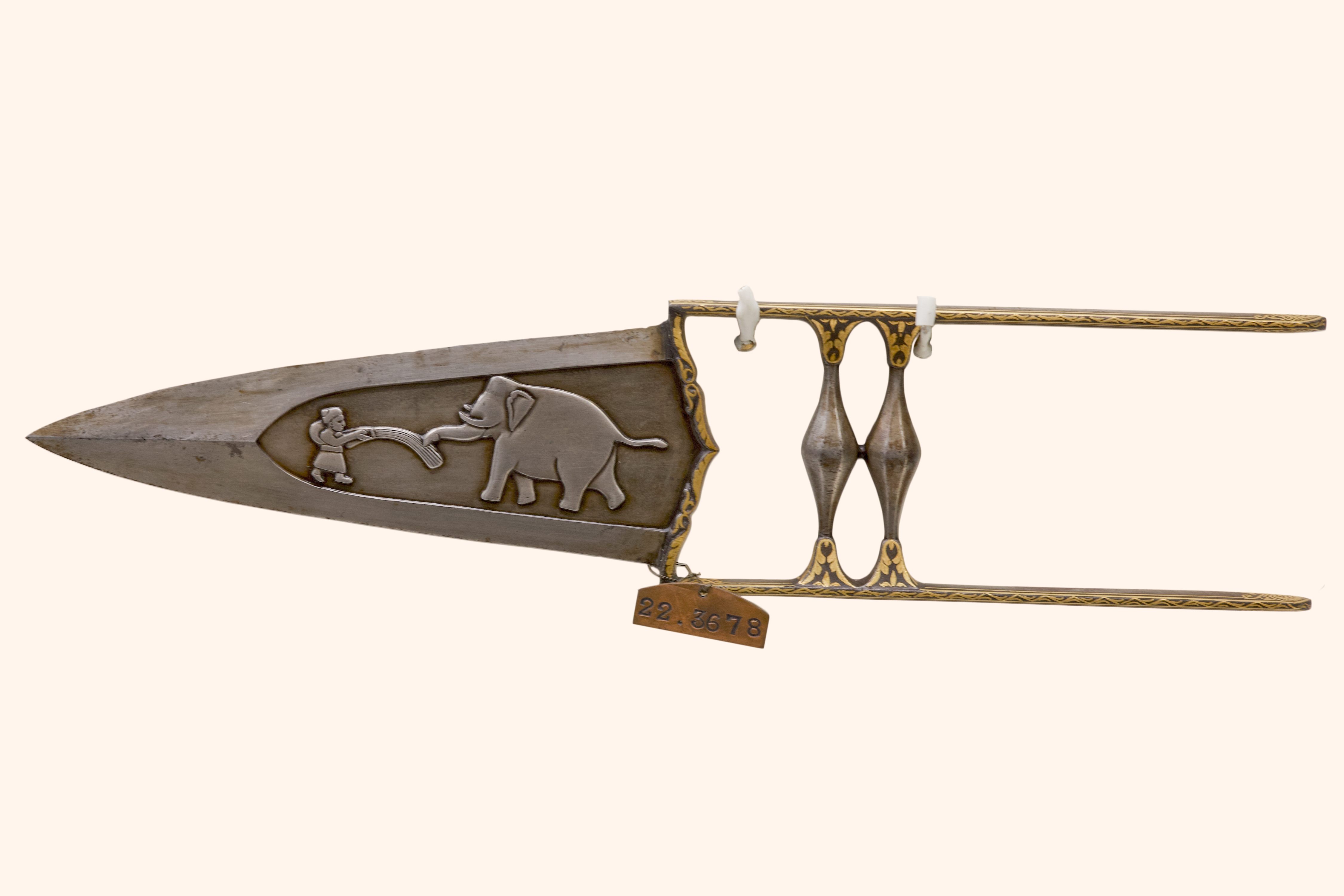Small Dagger
Present Location: Chhatrapati Shivaji Maharaj Vastu Sangrahalaya, Mumbai
Period: Medieval
Material: Metal
Objects: Armoury and Weapons
Style: Mughal
Credits: Sir Ratan Tata Collection
The Jamdhar is a typical Indian push dagger. Its peculiarity lies in the H-shaped handle which is made of two parallel bars connected by two or more cross pieces. The jamdhar is used as a thrusting weapon. It was a weapon of war as well as self-defense. It was popular in 16th-17th century A.D. as evidenced by the miniature paintings of this period. The word jamdhar is also mentioned in the Ain-i-Akbari.
The etymology of the word as given by J. Shakespear, 1790, is jam, from the Sanskrit yam, which means death, and dhar, which means a sharp edge. Thus it seems that the weapon is native to India. Interestingly, the British at first couldn’t understand as to why Indian soldiers wore heavy armours, given the hot climate of the country and the vast distances that they had to travel. Probably they didn’t understand this was done to protect themselves from the Jamdhar. Another point to note is that to do the work of Koftagiri for the decoration of the dagger, metal workers (Lohars), polishers (Sikligars) and silver or gold smiths (Sonis) worked together.
 Government of Indiaa
Government of Indiaa


 Recognizing the ongoing need to position itself for the digital future, Indian Culture is an initiative by the Ministry of Culture. A platform that hosts data of cultural relevance from various repositories and institutions all over India.
Recognizing the ongoing need to position itself for the digital future, Indian Culture is an initiative by the Ministry of Culture. A platform that hosts data of cultural relevance from various repositories and institutions all over India.
